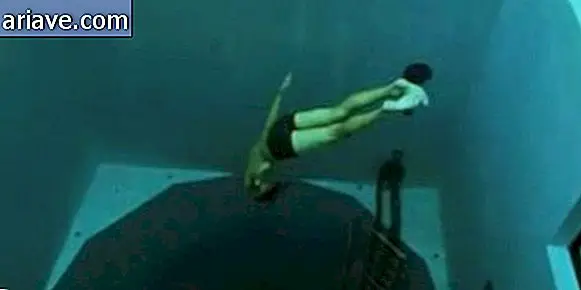What would happen if we jumped into a hole across the earth?
Imagine that you want to reach the other side of the earth - which, depending on where you live, would be somewhere in Asia - and decide to dig a hole there. What do you think would happen if you jumped into it?
According to Nicholas Gerbis of how stuff works, there are two ways to approach this curious question: one considering what would really happen to us if we decided to jump into a hole that came from the other side of the planet, and the other disregarding all the logic and imagining that this kind of trip is possible.
The way

Before you head over, how about some details about what we would find along the way? According to Nicholas, the continental crust has thicknesses ranging from 35 to 70 kilometers - or about 5 to 10 kilometers if we consider that the hole was made somewhere at the bottom of the sea. After the crust we would have to cross almost three thousand kilometers of mantle until we reach the outermost layer of the Earth's core.
This outermost layer, in turn, is huge and about the size of the planet Mars! It is - basically - made of cast iron and has temperatures of approximately 5.5 thousand degrees Celsius. The next step would be to cross the innermost layer of the core, which, according to Nicholas, is the size of our moon. Well, so far we've only come halfway!
Jump! Jump!

You already realized that the trip would not be easy, right? However, let's say the Earth is a cold, uniform, inert rock of acorn, and we would encounter no resistance to air during the crossing — no lost or alien civilizations along the way. As you know, gravity keeps us “glued” to the surface with an acceleration of 9.8 meters per second squared.
This means that with every second of fall we would be accelerating 9.8 m / s towards the center of the planet. It turns out that gravity is a function of mass, and mass, in turn, is a property of matter. The whole mass of the earth lies beneath the surface, and as we travel to the other side, more and more of this mass surrounds us, exerting its own gravity on our bodies.
Speed up and slow down

According to Nicholas, these forces around us also act upon each other and cancel each other out, and the increase in the mass ratio over us exerts a proportional counterpoint to the mass that is decreasing lower, causing our acceleration to slow as we get to the bottom. Earth's center.
Coming to the center of the planet, due to gravity, our acceleration would be zero, since the entire mass of the planet would be around us and above us, canceling gravity and making us weightless. However, don't think that upon reaching the middle of the earth our bodies would slow down and then we would travel to the other side!
In fact, from the mouth of the hole to midway to the center of the earth we would be falling at an ever-increasing speed of up to 24, 000 kilometers per hour. After 21 minutes of jumping, our speed would be around 29, 000 kilometers per hour, and after flying through the center, we would travel for another 21 minutes toward the other side.
But with gravity slowing down our bodies, if there is no one on the other side to hold us in, we would simply start falling down the same path we came to the center of the earth again. And we would repeat this path from the original starting point to the other side and back infinitely, in an oscillatory motion known as Simple Harmonic Motion.
Do not jump! Do not jump!

After presenting this hypothetical scenario, Nicholas invites us to come back to reality and consider some important issues. First, to tunnel through our planet, one would have to find a way to overcome the incredible pressure exerted by 6.6 sextillons of rock weighing toward the center of the Earth - equivalent to 3 million times the pressure on the planet. sea level.
Let's say we were able to make a tunnel about 7.6 meters in diameter. To do this, we would have to remove almost 580 million cubic meters of rock, and decide what to do with all this material. Moreover, as Nicholas had already explained at the beginning of the article, the interior of the earth is extremely hot, and this is due to a number of factors such as internal friction, gravitational compression etc.
We have yet to consider the mass variations that exist in the earth's crust, derived from the presence of mountains and oceanic pits, as well as the different densities of the Earth's inner layers, which become denser as we reach the planet's core. All of this would affect our acceleration along the journey, causing our speed to oscillate - and not as described in the hypothetical scenario.
Poft

What's more, if the hole is dug along the equator line due to the Coriolis pseudo-force (see GIF above) and the angular momentum resulting from the earth's rotational motion, when we are falling through the hole to the center of the planet we would hit - at great speeds - against one of the tunnel walls before we got too far.

Digging the hole from one pole to another would not help much either, because in this case, lunar and solar gravity - yes, they also exert gravity on Earth - would eventually hit one side of the tunnel as well. As a matter of curiosity, the deepest drilling ever made on the planet is that of Kola, Russia, which reached 12, 262 meters.
***
So, dear reader, as you have seen, if you want to get to the other side of the earth, the best thing is to keep facing many, many hours on a plane! But to imagine what it would be like to travel this way is still very interesting, don't you think?











